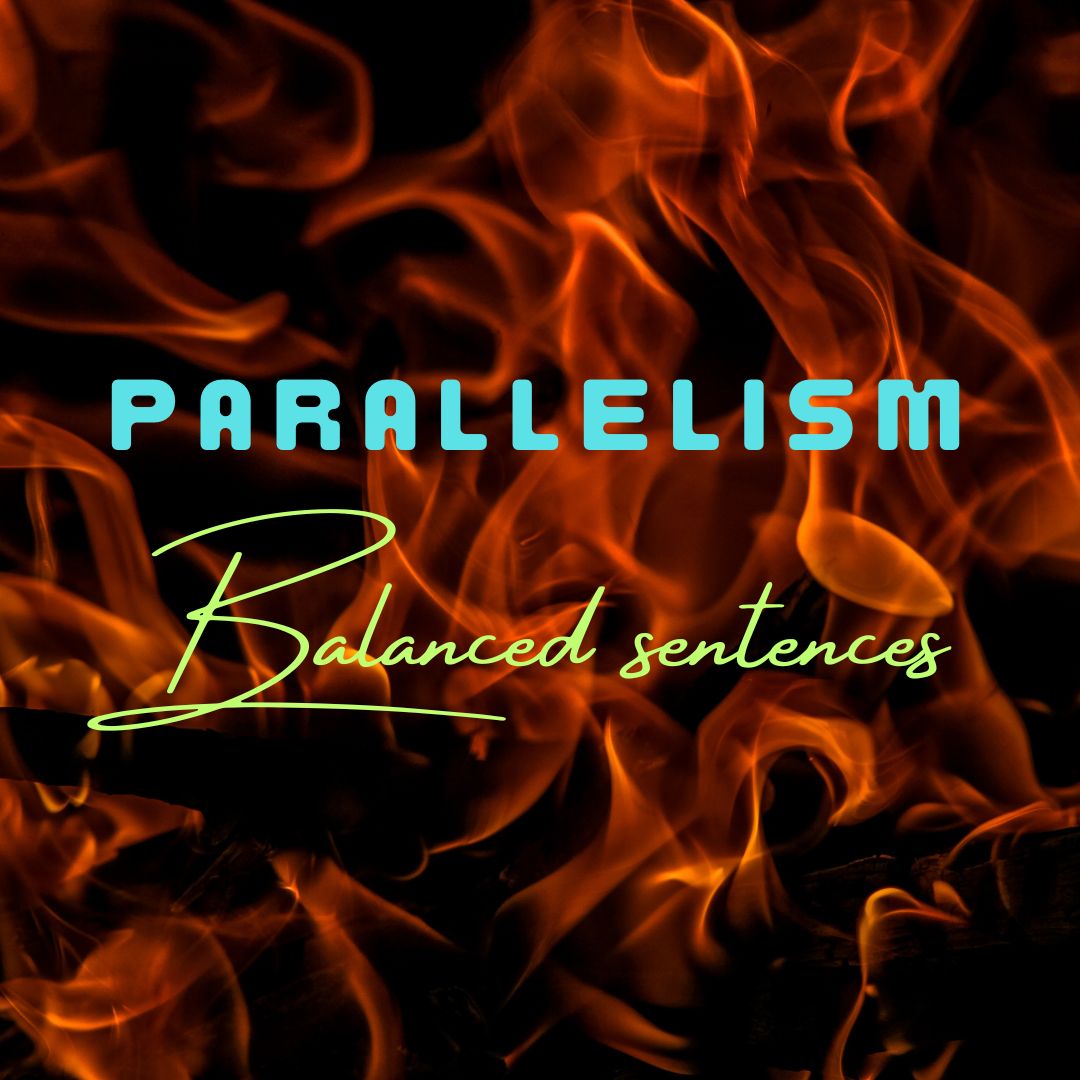Parallelism in English Grammar

Crafting Balanced sentences-Parallelism
In English grammar, the phenomenon where similar or parallel elements within a sentence are presented with a balanced and harmonious structure is called parallelism.
It involves using the same grammatical form or structure for items in a list, a series, or a comparison to enhance clarity, coherence, and overall readability.
Parallelism is often achieved through the use of coordinating conjunctions and correlative conjunctions, as well as by ensuring consistent grammatical structures for the elements involved.
Parallelism is a key concept when it comes to balancing elements in a sentence, especially with regard to nouns, verbs, and other grammatical structures.
Nouns:
The conference covered topics such as artificial intelligence, machine learning, and data analytics.
Explanation: In this sentence, the parallel nouns artificial intelligence, machine learning, and data analytics share a similar structure, contributing to the balanced construction of the sentence.
Verbs:
He likes to run, jump, and play.
Explanation: The verbs run, jump, and play are parallel in structure.
Adjectives:
The room was cozy, warm, and inviting.
Explanation: The parallel adjectives cozy, warm, and inviting have a consistent structure, describing the room in a harmonious way.
Adverbs:
She completed the task quickly, efficiently, and accurately.
Explanation: The adverbs quickly, efficiently, and accurately are parallel, describing how she completed the task.
Prepositional Phrases:
He excels in leadership, in teamwork, and in problem–solving.
Explanation: The prepositional phrases in leadership, in teamwork, and in problem-solving are parallel, highlighting areas of excellence.
Parallel Gerunds:
They enjoy swimming, hiking, and biking.
Explanation: The parallel gerunds swimming, hiking, and biking maintain a consistent structure within the sentence.
Parallel Infinitives:
She decided to read, to study, and to relax.
Explanation: The parallel infinitives to read, to study, and to relax share a similar structure, contributing to the overall parallelism of the sentence.
Parallel Adverbs:
She spoke confidently, clearly, and persuasively.
Explanation: The parallel adverbs confidently, clearly, and persuasively maintain a consistent structure, describing how she spoke.
Parallel Clauses in a Sentence:
Parallelism is also crucial when dealing with clauses in a sentence.
Clauses are groups of words that contain both a subject and a predicate.
Here are examples of parallelism with clauses:
Independent Clauses:
She enjoys hiking in the mountains, swimming in the ocean, and reading by the fireplace.
In this case, the independent clauses hiking in the mountains, swimming in the ocean, and reading by the fireplace are parallel, contributing to a balanced list of activities.
Dependent Clauses:
Because she wanted to succeed, Mary devoted extra hours to studying, sought help from tutors, and collaborated with classmates on challenging assignments.
In this sentence, the parallel dependent clauses: Mary devoted extra hours to studying, she sought help from tutors, she collaborated with classmates on challenging assignments. They share a similar structure and contribute to the parallelism in the sentence.
Adjective Clauses:
The student who is diligent, who is responsible, and who is motivated will excel in any class.
The adjective clauses who is diligent, who is responsible, and who is motivated are parallel, describing qualities of the student.
Adverbial Clauses:
She completed the assignment as quickly as possible, as efficiently as possible, and as accurately as possible.
The adverbial clauses as quickly as possible, as efficiently as possible, and as accurately as possible are parallel, describing how she completed the assignment.
The Art of Using Conjunctions to Create Harmony in Sentences:
Coordinating conjunctions and correlative conjunctions play a significant role in achieving parallelism in sentences.
Let’s delve a bit deeper into how these conjunctions contribute to maintaining parallel structure:
Coordinating Conjunctions
(e.g., and, or, but, nor, for, so, yet):
Example: She likes to hike, swim, and read.
The coordinating conjunction and helps connect and coordinate the parallel elements hike, swim, and read in the sentence.
Example: He can either run or cycle to work.
The coordinating conjunction or connects and coordinates the parallel actions run and cycle.
Correlative Conjunctions
(e.g., both…and, either…or, neither…nor, not only…but also):
Example: Both the cat and the dog enjoy the sunny weather.
The correlative conjunction both…and pairs and coordinates the parallel subjects the cat and the dog.
Example: She is not only diligent but also resourceful.
The correlative conjunction not only…but also pairs and coordinates the parallel adjectives diligent and resourceful.
By using coordinating conjunctions, you can connect elements of the same type in a sentence, creating a sense of balance and parallelism.
Correlative conjunctions, on the other hand, work in pairs to emphasize and coordinate parallel elements.
These conjunctions are crucial tools for writers seeking to maintain a consistent and harmonious structure in their sentences.
Parallelism in English Grammar
What is Adverbial Modifier of a Sentence
What is the Attribute of a Sentence?
What is The Object of a Sentence?
Subject-Verb Agreement in English